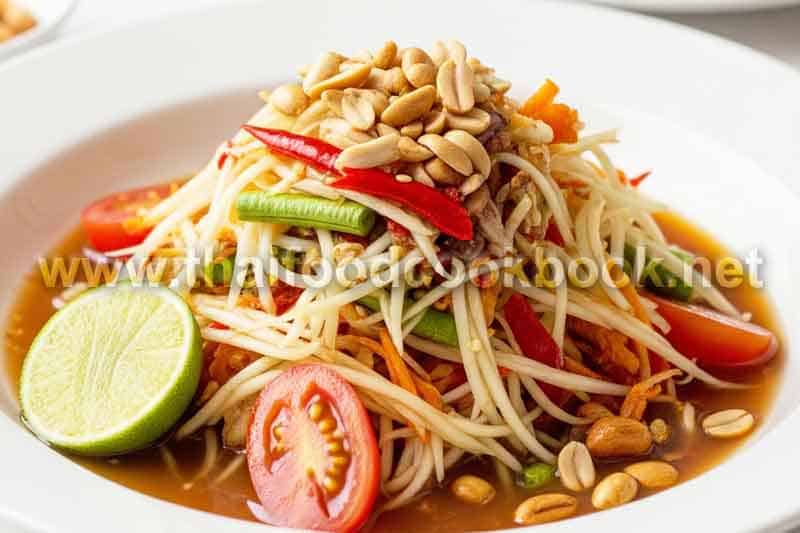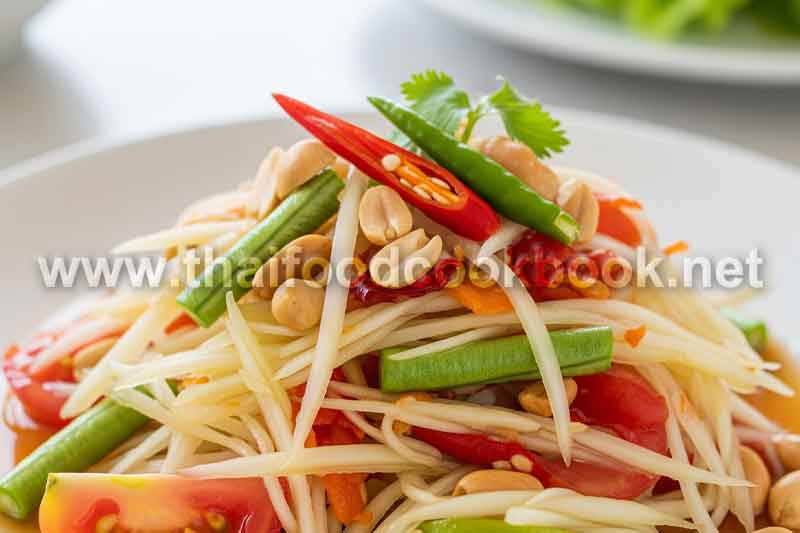Som Tum Equipment 101: Choosing the Right Mortar & Pestle
Crafting the perfect Som Tum at home goes beyond fresh ingredients and traditional techniques — the tools you use make a major difference. Many home cooks struggle with getting the right texture and flavor, even when following authentic recipes. This often comes down to the mortar and pestle used during preparation. Choosing the wrong equipment can lead to soggy papaya, uneven flavors, or broken textures. That’s why selecting the right type of mortar and pestle is crucial. This guide explores the different types available, what makes each unique, and how to choose the best one for your needs. Whether you’re new to Thai cooking or an experienced home chef, understanding Som Tum equipment is your first step toward making restaurant-quality papaya salad at home.
Understanding the Role of the Mortar and Pestle in Thai Papaya Salad
In Thai cuisine, the mortar and pestle — known as “Krok” and “Sak” — are not just tools, but extensions of the cook’s hand. Making Som Tum requires more than just mixing ingredients; it involves lightly bruising components to release their flavors without turning them into mush. Unlike Western salad prep, Thai green papaya salad relies on this controlled pounding technique to combine and enhance taste layers.
Using the proper mortar and pestle ensures that:
- Each ingredient is blended with the correct pressure.
- Fruits and vegetables retain their crunch and structure.
- The dressing fully coats the shredded papaya without being watery.
When choosing a mortar and pestle specifically for Som Tum, understanding their functional importance is the foundation for your equipment choice.
Comparing Mortar Materials: Clay vs Granite vs Wood
The most common question beginners ask is: What type of mortar is best for making Som Tum? Each material — clay, granite, and wood — offers distinct advantages and disadvantages depending on how you prepare your salad.
Clay Mortar with Wooden Pestle (Classic for Som Tum)
- Lightweight and traditionally used in Thai street kitchens
- Gentle on ingredients; ideal for tossing and bruising
- Great for liquid-based recipes like Som Tum Thai or Tam Mak Hoong
Granite Mortar and Pestle (Used for Pastes and Spices)
- Heavy and stable, excellent for grinding spices and curry pastes
- Too rough for Som Tum; may break down papaya too much
- Can be used for prepping garlic and chili before transferring to clay mortar
Wooden Mortar and Pestle (Lighter but Less Durable)
- Not commonly used for Som Tum
- Tends to absorb strong smells and flavors
- More suitable for decorative use or dry pounding
Ultimately, the clay mortar and wooden pestle combination remains the top recommendation for achieving the best Som Tum texture and authenticity.
How to Choose the Right Size and Shape for Effective Som Tum Preparation
Size and shape are often overlooked, yet they dramatically affect how well your Som Tum turns out. Here’s how to choose the right size for home cooking:
- Medium-size clay mortar (6-8 inches wide): Perfect for making 1–2 servings of Som Tum without overcrowding.
- Deep and round shape: Helps contain ingredients during pounding and mixing.
- Sturdy wooden pestle: Should fit comfortably in your hand and be at least 8–10 inches long for better control.
Avoid using mortars that are too shallow or have flat bottoms, as they can cause ingredients to spill or reduce your ability to mix thoroughly. Ergonomics also matter — a comfortable grip ensures that you won’t tire your wrist during longer prep sessions.
Care and Maintenance Tips for Mortar and Pestle Longevity
Once you’ve invested in the ideal mortar and pestle for Som Tum, proper care ensures it lasts for years while maintaining flavor integrity. Different materials require different maintenance routines:
- Clay Mortars: Rinse with warm water after each use. Avoid soaking in soapy water to prevent absorption of flavors.
- Wooden Pestles: Wipe dry immediately and oil occasionally with food-safe oil to prevent cracking.
- Granite Mortars: Can be scrubbed with a stiff brush and air-dried. Season before first use to remove dust.
Never use metal utensils inside the mortar, as this may damage the surface and affect the taste of your dishes. With proper storage and routine cleaning, your Som Tum equipment will remain a reliable part of your kitchen arsenal.
Conclusion: Invest in the Right Equipment for Authentic Results
Making great Som Tum at home starts with the right tools. Understanding how different types of mortar and pestle influence flavor and texture is essential for creating a dish that’s true to its Thai roots. The classic clay mortar paired with a sturdy wooden pestle remains the go-to choice for most Thai cooks. It offers the ideal balance of control, gentleness, and authenticity. By choosing equipment that suits your cooking needs and caring for it properly, you’re taking a big step toward mastering Thai cuisine — one delicious papaya salad at a time.


